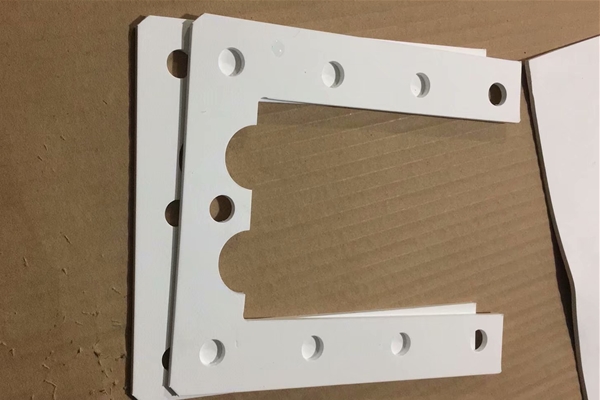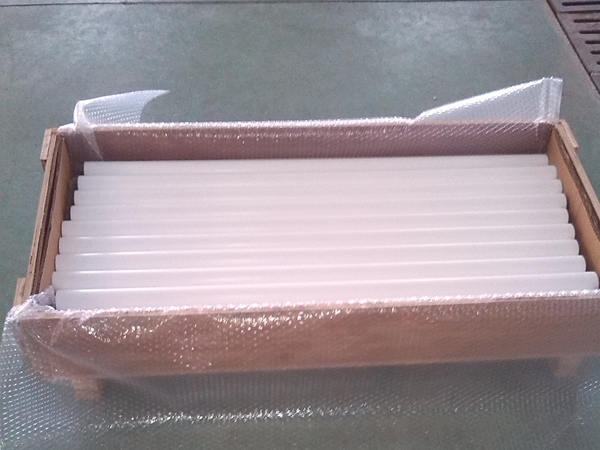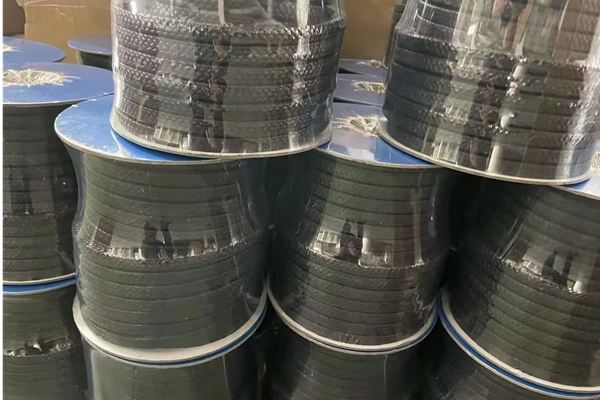In centrifugal pumps, slurry pumps, chemical pumps, and other rotating equipment, the sealing system is a critical component that prevents medium leakage and ensures safe, stable, and energy-efficient operation. The two most commonly used sealing solutions in the industry are: 1. Gland packing (braided packing or sealing packing), 2. Mechanical seals
I. Gland Packing (Packing Seal)
Gland packing is a simple, time-tested, and highly practical sealing method.
1. Working Principle
Gland packing, often referred to as “braided packing,” uses a rope-like, compressible sealing material made from natural or synthetic fibres. The packing rings are installed in the stuffing box around the pump shaft. When the gland follower (or packing gland) is tightened, it generates an axial compressive force. This force transforms into a radial sealing force, causing the packing to tightly hug the shaft or sleeve, effectively blocking the leakage path.
Since gland packing relies on shaft–packing friction, a small, controllable leakage is not only allowed but is actually necessary. This thin film of liquid is between the packing and the shaft:
– Lubricates the contact surface,
– Carries away frictional heat, and
– Helps maintain sealing performance.
Thus, packing sealing operates as a “micro-leakage lubrication” sealing method.
2. Selection Criteria for Pump Packing
To achieve stable sealing, the gland packing material must meet the following criteria:
1. Plasticity and Radial Recovery: Under gland pressure, it should deform radially to establish tight contact with the shaft.
2. Chemical Stability: It should not contaminate the pumped medium, become dissolved or swollen by it, release impregnating agents, or corrode the shaft or sleeve.
3. Good Self-Lubrication & Wear Resistance: A low friction coefficient is essential to minimise power loss and reduce wear on the shaft sleeve.
4. Floating Elasticity: The packing should be able to adjust and compensate when the shaft has a small radial runout or vibration.
5. Ease of Manufacture and Installation: It should be easy to cut, coil, install, and replace on-site.
As lubricants within the packing gradually get squeezed out during operation, the gland may need to be retightened to restore sealing pressure. Eventually, when the impregnating medium is exhausted, the packing will need to be replaced. Additionally, allowing a small visible leakage from the stuffing box is normal and necessary for maintaining the liquid film and dissipating heat.
6. For Media Containing Solids/Particles:
When pumps handle liquids containing sand, crystals, or other solids, packing seals are usually preferred over mechanical seals. This is because solid particles can easily damage mechanical seal faces, while packing can be readjusted or replaced at a lower cost.
3. Problems with Braided Packing in Pump Service
Although braided packing is widely used, it has several drawbacks:
1. Direct Friction with the Shaft/Sleeve
Packing runs directly on the rotating surface, which eventually causes wear on the shaft or sleeve that must be replaced periodically.
2. Inherent Leakage Requirement
To dissipate heat, a certain leakage rate must be maintained. Controlling this leakage can be challenging, and for high-value or hazardous materials, it is often unacceptable.
3. High Power Consumption
The constant friction between the packing and the shaft reduces the effective output of the pump. In some cases, energy loss due to packing friction can reach 5–10%.
4. Frequent Maintenance
As the packing wears and lubricant is lost, it relaxes, necessitating frequent adjustments to the gland and periodic complete repacking.
5. Limited Pressure/Temperature Capability
At higher temperatures and pressures, packing can harden, age, or lose its sealing force, increasing the risk of leakage.
Based on the principles of packing sealing, potential leakage paths in the stuffing box are threefold:
– Through the packing material itself,
– Between the packing and the box wall,
– Between the packing and the shaft/sleeve.
To reduce leakage, key measures include:
– Selecting the right packing material (such as Acrylic fibre, PTFE, graphite PTFE, aramid PTFE, or ramie fibre),
– Designing an effective stuffing box and applying the correct gland load.
4. Improvements to Packing
With advancements in materials, PTFE-based packings (including pure PTFE and PTFE graphite) have become increasingly popular in pumps due to the following reasons:
– PTFE has an extremely low friction coefficient.
– It offers excellent chemical resistance.
– Its thermal expansion behaviour is well-suited for pump shafts.
Some designs also incorporate SC-type sealing technology, which adds a silicone or rubber core inside the braided packing. This allows the braided packing to better accommodate shaft vibrations and maintain contact pressure. Additionally, using proper lubricants or dispersions during braiding or post-impregnation can enhance wear resistance.
Mechanical Seal
Mechanical seal (end-face seal) is now considered the higher-end and more leak-tight pump sealing technology, especially for petrochemical, hazardous, toxic, flammable and environmentally sensitive media.
1. Working Principle
A mechanical seal consists of one rotating ring (dynamic ring) attached to the shaft and one stationary ring (static ring) fixed in the housing. The end faces of these rings are:
– Perpendicular to the shaft
– Precision-lapped to achieve very low roughness
– Pressed together by springs or bellows, as well as by medium pressure
During operation, a very thin lubricating film develops between the two faces. This film enables sliding with minimal leakage, often down to a vapour-level leakage that is practically invisible.
An elastic compensating element (such as a coil spring, multiple springs, wave spring, or metal bellows) maintains contact between the faces, compensates for minor wear, and adjusts to small axial movements or shaft vibrations.
2. Advantages
Excellent Sealing: Leakage is minimal—typically 1% or less of that found in packing seals—making them suitable for oils, chemicals, toxic substances, explosives, and high-value media.
Long Service Life: With the correct material pairing (e.g., SiC/SiC, TC/TC, carbon/SiC) and appropriate operating conditions, mechanical seals can last for 2 to 5 years or more without needing an overhaul.
Long Maintenance Intervals: Frequent re-tightening is typically unnecessary, making them ideal for automated plants.
Low Friction Power Loss: Friction loss is only 10% to 50% of that from packing seals, resulting in improved energy efficiency.
Good Adaptability: Mechanical seals can tolerate a certain degree of shaft deflection, misalignment, and axial movement.
Wide Applicability: With appropriate designs, they can be used in high-pressure, high-temperature, high-speed, corrosive, toxic, or even slurry-containing media.
3. Disadvantages
Complex Structure: They require many precision parts, tight tolerances, and high-quality surface finishes.
Higher Initial Cost: The materials and manufacturing costs are significantly greater than those for gland packing.
Higher Installation Skill Requirement: Improper installation, contaminated medium, or incorrect flushing can quickly lead to failure.
4. Typical Causes of Failure
Mechanical seals can start to vibrate, heat up, wear rapidly, or leak suddenly due to one of the following issues:
Seal Face (Friction Pair) Problems:
– Wear or scoring (often caused by particulates)
– Thermal cracking (often due to dry running or inadequate cooling)
– Distortion or breakage (usually due to incorrect assembly or overly brittle non-metallic rings)
Spring / Elastic Element Problems:
– Relaxation and loss of force (often due to prolonged exposure to high temperature)
– Corrosion
– Fatigue fracture
Secondary Seal Problems (O-rings, bellows gaskets):
– Assembly defects: nicks, twisting, cutting, pinching
– Non-assembly defects: ageing, hardening, swelling, chemical attack
Ultimately, these issues can manifest as medium leakage at the seal.
Advantages and Disadvantages of Gland Packing
Advantages
1. Effective Sealing for Various Media
By selecting the appropriate fibre (such as ramie fibre, acrylic fibre, aramid, carbon fibre, or PTFE) and the right lubricant/impregnant, packing seals can effectively contain water, mild chemicals, viscous substances, and even particulate media.
2. Easy Maintenance
The structure of packing seals is simple, allowing operators to perform repacking on-site without the need to dismantle the entire pump.
3. Low Cost
Both the initial investment and the cost of spare parts are relatively low.
4. Good Corrosion Resistance (Material-Dependent)
Sealing Packings made from materials like PTFE, Graphite PTFE, Aramid PTFE, and acrylic PTFE can be designed to withstand chemical services.
Disadvantages
1. Shorter Service Life
Due to a large frictional area and high pressure, packing seals tend to wear quickly, necessitating more frequent repacking.
2. Limited Capacity for High Pressure and High Temperature
Rubber or plastic-based packings may deteriorate faster under high-pressure and temperature conditions.
3. Requires Allowing Leakage
This characteristic makes packing seals unsuitable for handling expensive, toxic, explosive, or strictly non-leaking media.
4. Higher Power Consumption
Friction against the shaft can reduce pump efficiency, leading to increased power consumption.
Advantages and Disadvantages – Mechanical Seal
Advantages
Very reliable sealing – leakage is very small.
Long service life – often several years.
Long maintenance interval – good for the continuous process industry.
Low friction loss – energy-saving.
Tolerates small misalignment and shaft vibration.
Disadvantages
Structure is complicated – manufacturing and installation must be precise.
Initial investment is high.
Requires clean medium or flushing – otherwise particles will damage the faces.
Overall Comparison
| Comparison Item | Gland Packing / Packing Seal | Mechanical Seal |
|---|---|---|
| Sealing performance | Moderate – needs visible leakage for lubrication | Excellent – very low / near-zero leakage |
| Power loss | High, due to shaft–packing friction | Low – 10–50% of packing loss |
| Service life | Shorter, frequent adjustments and replacement | Longer, 2–5 years common |
| Maintenance | Frequent, but very easy and low skill | Infrequent, but requires trained personnel |
| Shaft/sleeve wear | Significant, needs periodic sleeve replacement | Almost none (liquid film separation) |
| Initial cost | Low | High |
| Suitable media | Water, general media, media with particles | Oil, chemicals, toxic, explosive, corrosive media |
| Suitable pressure | Low to medium | Medium to high, depending on design |
How to Choose Between Gland Packing and Mechanical Seals
Choose Gland Packing When:
– The medium is water or a general non-toxic liquid.
– The pipeline or pump can tolerate small leaks.
– The medium contains solids.
– The site requires low cost and easy on-site maintenance.
Choose a Mechanical Seal When:
– The medium is flammable, explosive, toxic, or expensive.
– Leakage is not permissible.
– The operating pressure or temperature is high.
– A long mean time between failures (MTBF) and low daily maintenance are needed.




